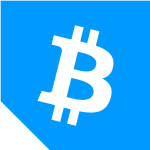
Few things in the cryptocurrency space are as promising as Bitcoin’s Lightning Network — a second layer payment protocol enabling instant transactions between participating nodes. With the unveiling of seven applications utilizing the technology this week, that fact is only becoming more apparent.
Powered by Lightning
This week, Blockstream — a leading provider of blockchain technologies — has been continuously rolling out new Lightning Apps (LApps) which give Bitcoin fans a taste of the future.
The company has already revealed both FileBazaar and The Lightning Publisher for WordPress — a plug-in which affords anyone the ability to become their own publisher by allowing individuals to collect payments for sharing their content on a WordPress system.
Welcome to the #WeekofLApps! @Blockstream is introducing 7 new #LightningApps (#LApps) over 7 days. The first #LApp is #FileBazaar, an app that enables #Lightning #micropayments for creators that produce digital files like photos, videos, or docs. https://t.co/mJGp1xROO9
pic.twitter.com/yGpFhAm8sd
— Blockstream (@Blockstream) March 22, 2018
Afterward, on March 24, Blockstream unveiled the Nanotip LApp, which “solves Lightning’s payment-request problem for tipping by creating a simple web server that writes Lightning payment requests on the fly.” By providing content creators with their own tip-bot, they remain in total control while securing a significantly higher level of privacy than previous Bitcoin tip jars. Additionally, tippers are able to choose the exact amount they want to tip and receive an instantaneous Lightning invoice.
Blockstream followed that up with Paypercall, which “fulfills the long-held promise of a next-generation web of micropayments, where web developers can request payments for specific, programmatic API actions.” Asks the company:
Want to require a micropayment when a user sends an SMS? Want to offer image processing services for a microfee? Paypercall allows developers to do so, and with Lightning’s instant payments, it enables instantaneous access to an API’s functionality.
On March 26, Blockstream revealed Nanopos, “a streamlined point-of-sale system intended for businesses with fixed-price items, such as coffee shops and falafel stands.” The LApp essentially affords vendors the ability to create entries for their items in a config file, while customers can simply select the items they wish to purchase, receive a QR code, and transact a payment to the vendor’s Lightning Charge server.
Today, Blockstream kept the ball rolling by unveiling Ifpaytt (If Pay Then That), which is powered by Lightning Charge and Paypercall and uses the IFTTT (If This Then That) infrastructure, giving users the ability to create applets by combining triggers and actions. In layman’s terms, “anyone can charge a micropayment for any action on any web page.”
One more Lightning Application has yet to be revealed, but if these LApps don’t get you excited about Bitcoin’s future — nothing will.
What do you think of Blockstream’s unveiled Lightning Apps? Let us know in the comments below.
Images courtesy of Emil Jarfelt/Good Free Photos
The post Bitcoin’s Lightning Network Gets Charged With 7 New ‘LApps’ appeared first on Bitcoinist.com.

Bitcoinist.com is author of this content, TheBitcoinNews.com is is not responsible for the content of external sites.
Our Social Networks: Facebook Instagram Pinterest Reddit Telegram Twitter Youtube











